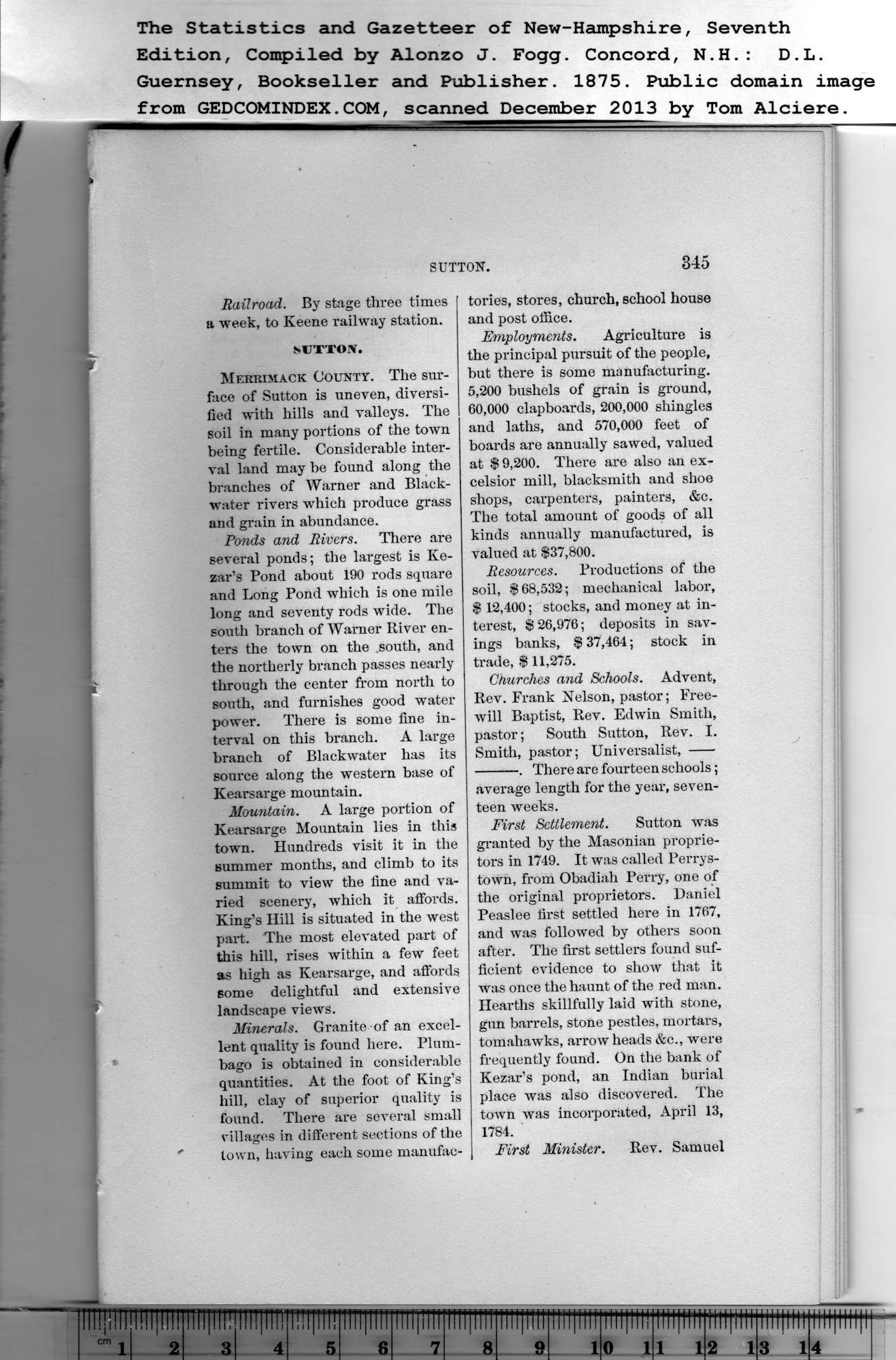|
Railroad. By stage three times
a week, to Keene railway station.
SUTTON.
Merrimack County. The sur-
face of Sutton is uneven, diversi-
fied with hills and valleys. The
soil in many portions of the town
being fertile. Considerable inter-
val land may be found along the
branches of Warner and Black-
water rivers which produce grass
and grain in abundance.
Ponds and Rivers. There are
several ponds; the largest is Ke-
zar’s Pond about 190 rods square
and Long Pond which is one mile
long and seventy rods wide. The
south branch of Warner River en-
ters the town on the south, and
the northerly branch passes nearly
through the center from north to
south, and furnishes good water
power. There is some fine in-
terval on this branch. A large
branch of Blackwater has its
source along the western base of
Kearsarge mountain.
Mountain. A large portion of
Kearsarge Mountain lies in this
town. Hundreds visit it in the
summer months, and climb to its
summit to view the fine and va-
ried scenery, which it affords.
King’s Hill is situated in the west
part. The most elevated part of
this hill, rises within a few feet
as high as Kearsarge, and affords
some delightful and extensive
landscape views.
Minerals. Granite-of an excel-
lent quality is found here. Plum-
bago is obtained in considerable
quantities. At the foot of King’s
hill, clay of superior quality is
foitnd. There are several small
villages in different sections of the
town, having each some manufac-
tories, stores, church, school house
and post office. |
Employments. Agriculture is
the principal pursuit of the people,
but there is some manufacturing.
5,200 bushels of grain is ground,
60,000 clapboards, 200,000 shingles
and laths, and 570,000 feet of
boards are annually sawed, valued
at $ 9,200. There are also an ex-
celsior mill, blacksmith and shoe
shops, carpenters, painters, &c.
The total amount of goods of all
kinds annually manufactured, is
valued at $37,800.
Resources. Productions of the
soil, $68,532; mechanical labor,
$ 12,400; stocks, and money at in-
terest, $ 26,976; deposits in sav-
ings banks, $ 37,464; stock in
trade, $ 11,275.
Churches and Schools. Advent,
Rev. Frank Nelson, pastor; Free-
will Baptist, Rev. Edwin Smith,
pastor; South Sutton, Rev. I.
Smith, pastor; Universalist, -
. There are fourteen schools;
average length for the year, seven-
teen weeks.
First Settlement. Sutton was
granted by the Masonian proprie-
tors in 1749. It was called Perrys-
town, from Obadiah Perry, one of
the original proprietors. Daniel
Peaslee first settled here in 1767,
and was followed by others soon
after. The first settlers found suf-
ficient evidence to show that it
was once the haunt of the red man.
Hearths skillfully laid with stone,
gun barrels, stone pestles, mortars,
tomahawks, arrow heads &c., were
frequently found. On the bank of
Kezar’s pond, an Indian burial
place was also discovered. The
town was incorporated, April 13,
1784.
First Minister. Rev. Samuel |
